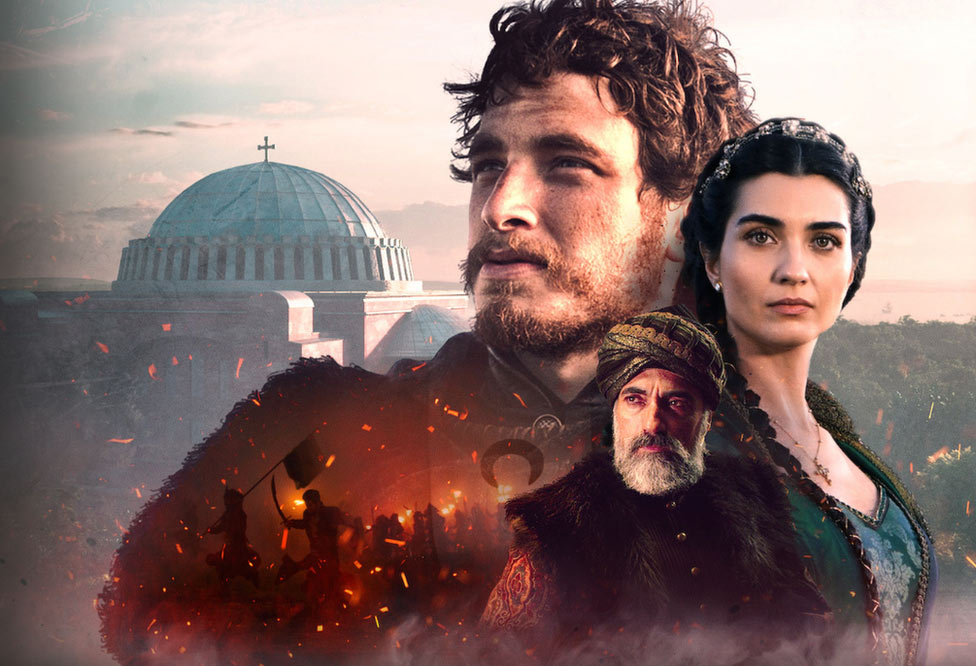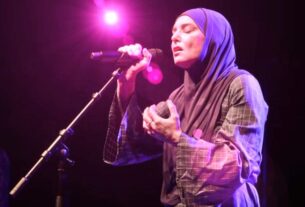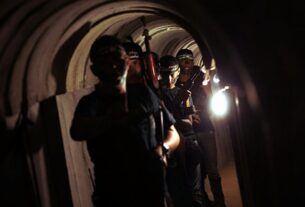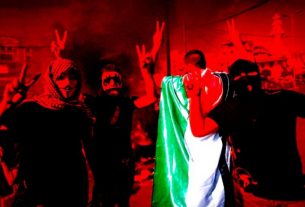Thu 09 April 2020:
Netflix’s documentary series ‘Rise of Empires: Ottoman’ is not about the rise of the Ottoman Empire or the conquest of Istanbul but instead a historically inaccurate account of the magnificent defense and fall of the Byzantine Empire
Netflix recently released a documentary series under the main heading of “Rise of Empires.” The first season of the highly anticipated series, written and directed by Emre Şahin, features the conquest of Istanbul, which points to the Ottoman state’s transition to an empire and the life of Sultan Mehmed II, aka Mehmed the Conqueror.
The series begins with an excerpt from Osman Gazi’s “Dream of Constantinople” (1280), a precursory dream with a metaphor of a tree. “That city, placed at the junction of two seas and two continents, seemed like a diamond set between two sapphires and two emeralds, to form the most precious stone in a ring of universal empire. Osman thought that he was in the act of placing that visional ring on his finger when he awoke.”
Osman Gazi has this dream while visiting his teacher, Sheikh Edebali. In the dream, two half-moons that rise from his and Edebali’s chest unite and become a full moon in the sky, entering Osman’s chest again. Then a plane tree rises from Osman’s heart and covers the world. Under the tree, he sees the seas, rivers, people in villages and cities in justice and prosperity. When Osman Gazi explained his dream to Sheikh Edebali, one of the respected clergymen in the region, he interpreted it: “Allah the Almighty has given you and your generation the sultanate, blessed be it. And my daughter will be your wife.” It was this dream that pointed to the conquest of Constantinople.
After brief battle scenes in the series, we hear the sentence, “Constantinople … Either I conquer you or you conquer me,” from Sultan Mehmed, who eyes the city walls. Emperor Constantine appears on the walls. While they exchange glances with Mehmed II, the sultan’s father Murad appears before him. The moment when Constantine, who comes after him with his sword, is about to kill Sultan Murad, Mehmed wakes up. With this opening scene, the psychology that dominates the most violent and distressed moments of the conquest is conveyed through the eyes of Sultan Mehmed in the dream. And when he comes out of his tent, there are walls that are burning, being shot and soldiers fighting.
Both dreams featured in the series reflect reality. Sultan Osman was an idealistic sultan. The Ottoman dynasty symbolized these ideals as “the Red Apple,” the metaphor for worldly dominion. The sultans who took the throne always acted in line with the goal of the Red Apple.
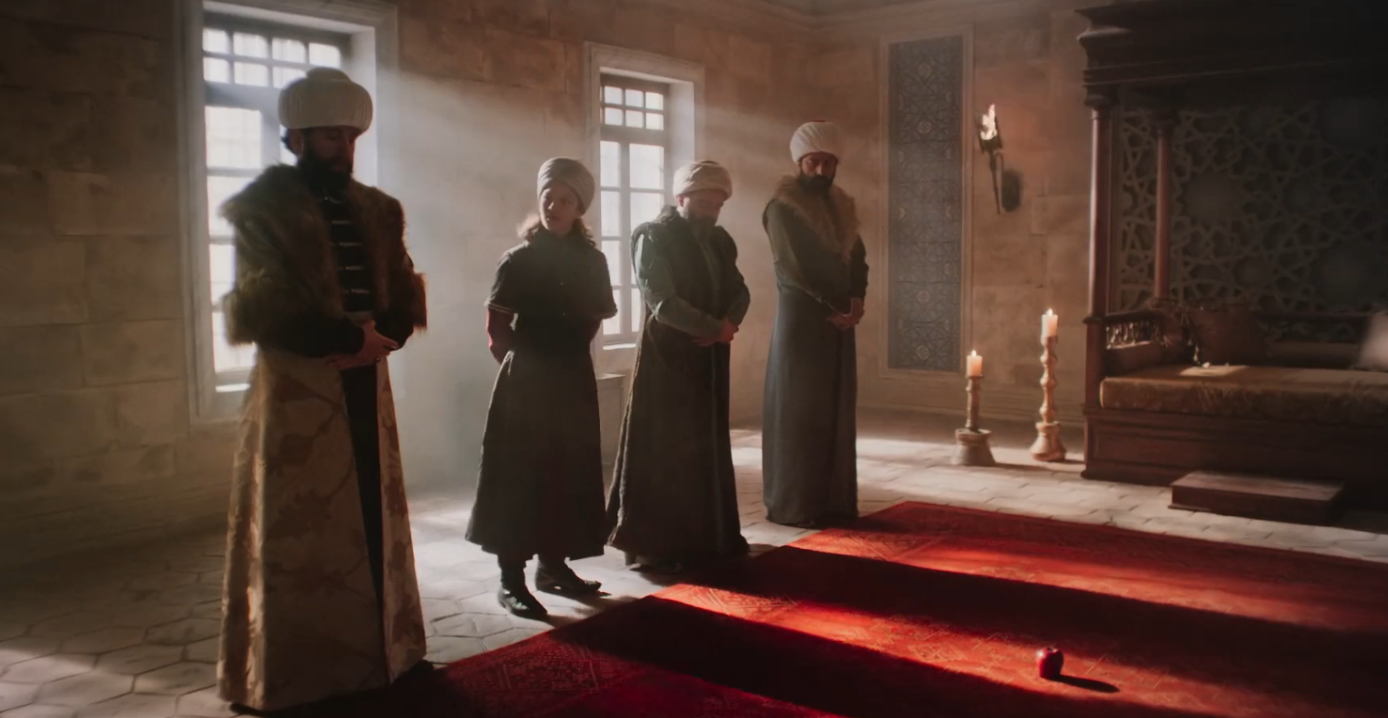
The scene in which the Red Apple metaphor is introduced in the series.Wonderful leader
The conquest of Istanbul was one of the most important of these goals. In the series, the words of the Prophet Muhammad were quoted by historian Michael Talbot: “Le Tufte Hannel Kostantiniyye. Fele ni’mel emiru emiruha. Vele ni’mel ceyş, zâlikel ceyş,” which is translates as: “Surely you, the Islamic nation, will conquer Constantinople. And how wonderful will its commander be, the commander of that nation. And how amazing, how wonderful will the army be, the army of that nation.”
All the motivation of Sultan Mehmed and his army comes from this gospel.
Netflix presented this documentary series with a masterfully thought out title. The title brings to the mind the question, “Will it continue with the other sultans from now on, or will it make a transition to other empires?” According to a FilmLoverss’ interview with the director, the subject of the upcoming seasons will be determined according to the popularity of the season to be aired.
In some way or other, the series has divided the Turkish audience into two sections. One side considers it an anti-Ottoman production, saying that the historical mistakes are made in a deliberate and malicious manner. The other side, considering the scarcity of historical productions in the Turkish film industry, argues that it should be appreciated both because it is a global project and because it boosts interest in history.
I am one of those who agree with the latter. There are not enough productions about Turkish history. In order for the better ones to come out, someone has to take first steps, albeit good or bad. While watching the series, I paused many scenes to take notes. Then I read the books from Byzantine historians such as Dukas who lived in those years and also from Turkish historians such as Tursun Bey, who personally participated in the conquest. Further reading shows that a universe of stories has been created in the series, according to the chronicle of Dukas.
In short, there are significant deficiencies in the light of historical information, as well as other aspects that are worthy of commendation. There are mistakes made because of anxieties about ratings and delivering a message. In addition, it is clear that this documentary series is not intended for the Turkish audience, but rather for the global audience of Netflix’s European-American market.
Constantine’s mistake
The first episode involves deciding on the conquest and initiating preparations. Emperor Constantine makes a historical mistake and demands that the tax paid for Mehmed’s uncle Orhan be increased. This threat is harshly rejected, opening the doors of legitimacy for a war. The series shows the beheading of these envoys; however, this is cited in neither Roman nor Turkish history. The envoys were killed neither at that time, nor throughout Ottoman history. After all, this is against the Islamic law of war.
After the unfavorable reply, Grand Duke Loukas Notaras said his famous maxim, “I would rather see a Turkish turban in the midst of the city than the Latin mitre” against the emperor who asked for Catholic help. The reason for this is the Catholic Latin invasion of 1204. This invasion could have been recalled by Notaras.
Çandarlı Halil Pasha from the Ottoman Empire opposes the conquest and meets Lukas Notaras. The traitors on both sides have been fictionalized under these names. When Sultan Mehmed learns this, Mara Hatun calms him. However, Mara was sent to Serbia in 1451. Neither Çandarlı was a traitor who met with Lukas, nor was Mara so influential on the sultan. There is no historical information about this, and it contradicts the chronology.
Where’s engineer Mehmed?
The construction of Rumelian Castle, called Boğazkesen Castle by the sultan, is shown in the series. However, the awesome engineering skill that helped build the castle in a period as short as four and a half months is not elaborated on.
The winter of 1452-53 was a time of intense preparation in Edirne. Weapons projects that would lead to revolutions in the history of the world were implemented. In the series, iron founder Urban, who cast artillery for the conquest of Istanbul, appears at this point. Urban is shown as presenting a project to the sultan. However, the fact is the exact opposite. There are cannons designed by the sultan himself. They drew joint projects with architect Muslihiddin and engineer Saruca Pasha.
Urban makes the biggest cannon alone. The Ottoman engineers cast all the other cannons. While Urban’s cannon shot, the Ottoman artillery breach the walls. It is a big shortcoming that engineers such as Muslihiddin and Sarıca are not featured.
Likewise, mortars used for the first time in the world war history were Sultan Mehmed’s own design. We see the large towers with wheels, which we know the sultan designed, in the series. But these are not used at all, they are just decoration. All these and many amazing techniques exercised during the war show that Sultan Mehmed is an engineering genius. However, the series cannot adequately illustrate this in the first episodes; instead, we just have an ambitious person. This genius of Sultan Mehmed stems from the decent education he received.
Şehzade without a teacher
The attack begins in the second episode. The Dardanelles Gun or Great Turkish Bombard cast by Urban cracks. The sultan avariciously orders the firing of the cannon, which could explode at any time. Urban warns him to get away, but he snaps at him and it explodes. This explosion is true. Urban dies here. However, the sultan is not injured. This is fiction made for flashbacks.
In the second episode, we see Şehzade Mehmed. There are obvious shortcomings in the scenes of his childhood. The perception that he lived apart and away from her mother, that his mother was a foreigner and he was raised by Mara Brankovic is fantastically wrong. Sultan Mehmed’s mother died in 1449, and she was always with him when he was a sanjak-bey. It is because şehzades (sultan’s sons) are trained under the supervision of their mothers in the sanjak system.
The fact that the şehzade was flogged and this was done by Çandarlı in scenes related to his education is fiction. Çandarlı was the grand vizier at the time, and state officials are not involved in şehzade training. Why would the grand vizier be with the sultan in Edirne teaching the şehzade in Manisa? The flogging is a highly exaggerated drama.
It is known that the sultan was not docile but a hyperactive character. However, there was no punishment that saw a şehzade held by his arms and whipped. Also, it is unthinkable in Ottoman history that a janissary agha would walk all over the sultan as if he were going to beat him in the early period of the sultanate and that the Çandarlı prevented him.
The strange thing is that Sultan Mehmed’s teachers and the men of science of that era are not featured in the script. There is no Mullah Gürani, the sultan’s private tutor, who trained him as a şehzade. A famous character like Akshamsaddin is absent as well. It was the teacher Akshamsaddin who encouraged the sultan during the shakiest days of the war in reality.
Even Franz Babinger, who had many negative views about Mehmed the Conqueror, expressed the influence of pundits on war, saying: “The sheikhs and dervishes visited the military camp and encouraged the soldiers to plant Islamic banners on the walls of the capital of the infidels, and they kept on mentioning the Prophet Muhammed, and the name of Abu Ayyub, a close friend of the prophet, who died in front of the city gates during the siege by the Arabs of Constantinople in 672.”
This psychology of the military is never shown in the series.
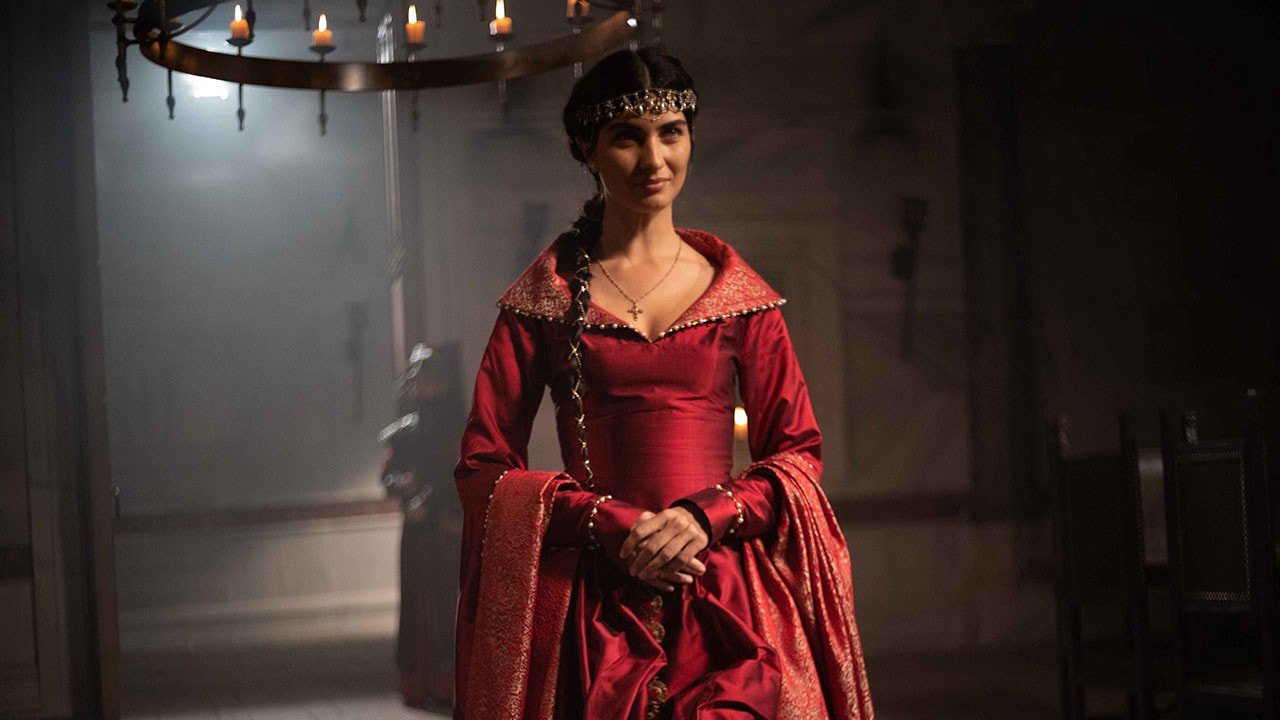
Tuba Büyüküstün as Mara hatun in the series.
Who is Mara?
To attract the attention of the Netflix audience, Mara Hatun was selected and fictionalized. In the first episode, we see Mehmed’s succession to the throne after the death of Sultan Murad II. Only Mara Brankovic is with Sultan Murad, and she gets up and closes the door. While Şehzade Mehmed vows revenge after being flogged, Mara Hatun consoles him. When Mehmed arrives in Edirne, Mara shows him the throne and says, “It is now yours.”
We see her in every episode. She is made to tell the prophecies. She replaces Akshamsaddin when the conquest falters. Mara is shown as the one who was brought from Serbia and encouraged the sultan.
Mara Hatun is the last person to stand by Sultan Murad in his final moments at the palace. It is not known that he was in Edirne Palace at the time. Sultan Murad married Mara for political reasons. When she arrived, he didn’t even want the wedding to be held, so he sent her to Bursa. He had other wives and daughters with him at the time of his death.
Sultan Mehmed and Mara Hatun never had a relationship like the one illustrated in the series. As soon as he ascended the throne, he sent her to Serbian despotism and took advantage of her several times after the conquest.
Constantine or Giustiniani?
Mercenary Giustiniani and his men demonstrated a very successful defense in the conquest. Historians agree on this. In fact, had he not fled the war and died fighting like Emperor Constantine, he would have been better remembered in history.
In the first episodes of the series, Giustiniani makes an act of sortie. He kills thousands of janissaries. First, Giustiniani fights the cavalrymen who constitute the majority in battle. The cavalrymen are the most populous main army, consisting of cavalry and infantrymen. Janissaries are a minority. However, in the film, we see janissaries as the Ottoman army.
It is said here that the janissaries are not masters of melee. This is very wrong in that the janissaries were professional soldiers trained in both close combat and remote combat. They are the private soldiers of the sultan and palace. They are adept at using any weapon. Among them are archers. The weapons they use are mostly melee weapons such as machetes and yataghan knives. They do not go to the front lines of the army and attack.
The lack of an effective rampart climbing scene, in which towers could have been used, is a big shortcoming of the series. Always filmed up close, the scenes grow boring after a few episodes.
How should they see?
In the fifth episode, the prophecies about the conquest are given wide coverage. Obviously, legends detail the conquest very well. What is described in this episode is utterly confusing. The legends of the Greeks and the legends of the Turks are completely different.
Other technicalities were also neglected while the story was being fictionalized. For instance, suddenly a light that looks like the Virgin Mary appears on Hagia Sophia and leaves the city. Both the people and the Ottoman army watch this together with the sultan. It is not possible to see this from the location where there are giant ramparts. These prophecies are fiction that oversimplifies the information provided by consultants.
Role of historians
The eras of Murad II and Mehmed II have been the turning point for Ottoman historiography since the earliest historiographers lived in this period. They all describe their own period in detail while giving general and brief information before the era of Murad II.
The historiographer who lived during the reign of Sultan Murad II and Mehmed II was Dukas, who was on the Greek side during the conquest of Istanbul. Dukas, who lived between 1400 and 1470, was under the command of Emperor Constantine at the time of the conquest. Normally, his book contains information that is hostile to Turks. When we look at the fiction of “Rise of Empires: Ottoman,” we see that it is built on the chronicle of Dukas.
It is surprising that Celal Şengör is one of the Turkish advisers of the series. He is criticized for being a specialist in geology. However, he has always made positive comments, expressing his admiration for the conqueror. Turkish academic Emrah Safa Gürkan, who is another consultant, is also criticized by some. However, the main point to be criticized is that Gürkan’s academic work is on maritime history, but he is allowed to talk very little in the section about naval wars in the series.
BY ALİ TÜFEKÇİ
-Source: Daily Sabah
Think your friends would be interested? Share this story!


